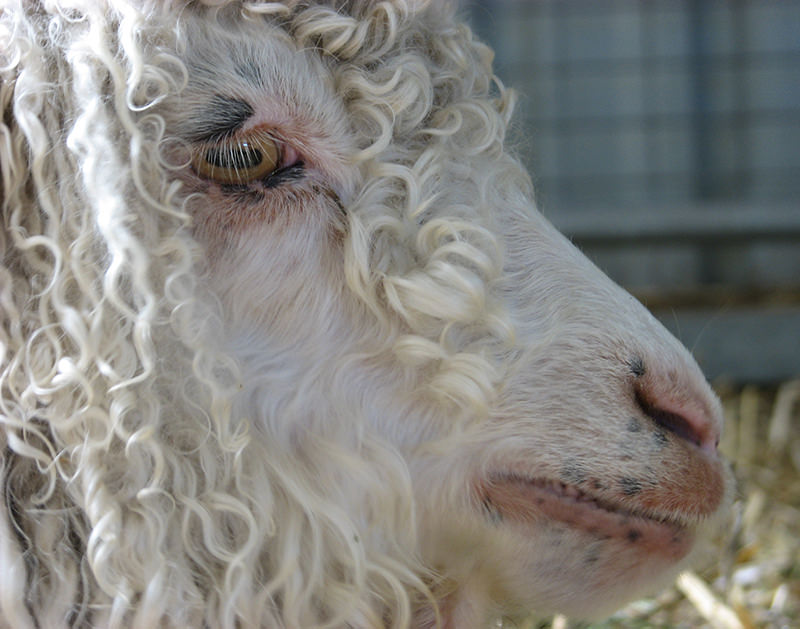
My Angora goat is anemic due to parasites. The vet says that it’s because the parasites have become immune to most dewormers. What can I do to give my Angora a boost, and is there any way I can avoid using harsh chemical dewormers to keep worm populations down in my goat and sheep herd? —Kendra
Kendra, I’m glad you asked this question. According to people at sheep and goat discussion groups Mom belongs to, lots of goats and sheep are becoming anemic. Some are dying due to parasite overload this year. That’s because prolonged heat and heavy rainfall cause barber pole worms to proliferate. This week, let’s talk about barber pole worms and anemia. Next week, we’ll discuss complementary types of parasite control.
Barber pole worms (Haemonchus contortus) are the most serious parasite of sheep and goats in the United States. Because barber pole worms are bloodsuckers, overloads cause potentially fatal anemia, as well as lower growth rates and greatly reduced reproductive performance.
Barber pole worms are 3/4 to 1 inch long and tapered at both ends. Females are red and white stripe—like an old-fashioned barber pole—and males are solid red. They live in the abomasum, or true stomach, of sheep and goats. They’re a worldwide threat but especially troublesome in hot, wet climates.
Sheep and goats ingest barber pole worm larvae while grazing. Lambs and kids don’t have barber pole worms when they’re born, but they can become infected when they start to eat grass. Once ingested, the barber pole worm larvae burrow into the lining of the host animal’s abomasums, where they feed on red blood cells. They molt twice before becoming adult barber pole worms. Female worms lay from 5,000 to 10,000 eggs every day—crazy, huh?! These pass out through feces into the pasture, where eggs hatch and the cycle starts again.
Adult barber pole worms also feed on their host’s blood, so sheep or goats with heavy worm loads quickly become dangerously anemic. Signs of barber pole worm infestation include diarrhea, dehydration, rough hair coats, incoordination, lethargy, bottle jaw and pale mucus membranes.
Bottle jaw, also called mandibular edema, happens when fluid accumulates under a sheep or goat’s jaw. Fluid also builds up in the animal’s abdomen and gut wall, but you can’t see that with your naked eye. If your goat or sheep gets bottle jaw, he is very close to death, so call your veterinarian without delay! But don’t mistake milk goiter, a benign swelling some kids and hair sheep lambs develop where its jaw meets its throat, for bottle jaw. Bottle jaw is puffy and hangs down from the jaw itself.

There’s an effective test available for detecting barber pole worm infestation in sheep. A less formal way is to monitor your goat or sheep for barber pole infestation is to check the membranes around its eyes at least every other week during the hot, damp summer months and monthly the rest of the year. South African livestock specialists developed a diagnostic procedure called FAMACHA that you can learn by attending a FAMACHA clinic, but you can run a basic test without FAMACHA training (see video below). Put one hand over your animal’s face and the other under his jaw, and use your thumbs to pull the tissue around his eyes up and down, taking a quick peek at the color inside his lower eyelid. It should be red to very rosy pink. If it’s pink to pale pink, your sheep or goat is anemic, and if it’s white, he needs to be wormed and see his vet right away.

Anemia can set in very quickly. Because it’s been so hot here in the Ozarks, Mom and Dad checked us goats’ and the sheep’s eye membranes two days ago and a bunch of us needed to be dewormed, even though our usual checkup is more than a month away! Checking eye membranes is easy—do it often and it could save your animal’s life.




